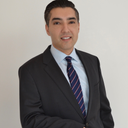I believe my cheeks are bruised. How long does it take the yellow skin to heal and is the a normal side effect of face ultherapy?
Answers (6)
From board-certified doctors and trusted medical professionals
Dr. Michael H. Gold, MD
Dermatologic Surgeon, Board Certified in Dermatology
Answer
More Ultherapy Questions
See all Ultherapy Q&AWE SEND PRETTY
EMAILS
What’s trending? Who’s turning heads? Which TikTok myths need busting? We’ve got you. No fluff, no gatekeeping—just real talk. Get our free, unfiltered newsletter.


